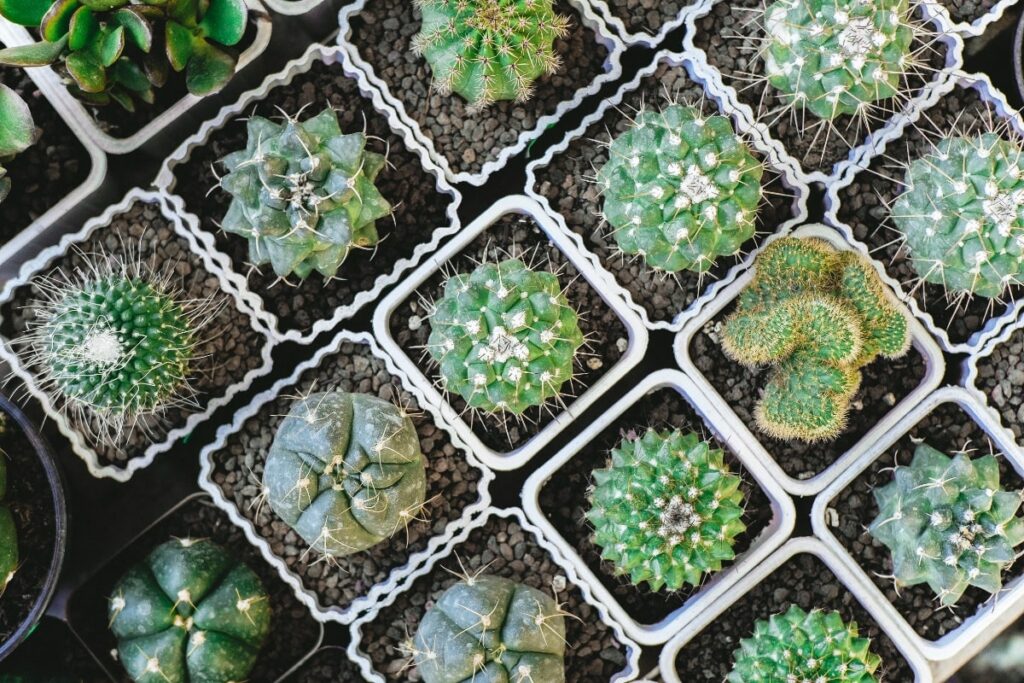Spiky plants are a popular choice for gardeners who want to add a touch of drama and texture to their landscapes. These plants are characterized by their sharp, pointed leaves or stems, which can range in size from small and delicate to large and imposing. But what makes spiky plants so intriguing? Well, for starters, they have the ability to add visual interest to a garden. Their unique shapes and textures can create a striking contrast against softer, more rounded plants, adding depth and dimension to a landscape.
But that’s not all. Spiky cacti and succulents can also be used to create a natural barrier or deterrent. Their sharp leaves or thorns can discourage animals or people from getting too close, making them a great choice for those who want to protect their garden or outdoor space.
Now, let’s talk about the different types of spiky plants. There are so many to choose from, each with their own unique characteristics and growing requirements. Some spiky cacti and succulents are small and delicate, while others are large and imposing. Some are green, while others are brightly colored.
So, whether you’re looking to create a desert-inspired garden or simply want to add some texture to your landscape, spiky plants are a great choice. In this article, we’ll explore some of the best spiky plants for your garden, including their unique characteristics and growing requirements. Get ready to add some drama and texture to your outdoor space!
Benefits of Spiky Cacti and Succulents
Spiky cactus and succulent plants are a fascinating addition to any garden or indoor space, offering a plethora of benefits that are both visually appealing and practical. Here are some of the reasons why you should consider incorporating spiky plants into your greenery:
1. Natural Security: The sharp spikes and thorns of spiky plants, such as cacti, agave, and yucca, act as a natural barrier that deters unwanted visitors from entering your property. These plants are a formidable obstacle that intruders will find difficult to climb over or cut through.
2. Low Maintenance: Spiky plants are generally low maintenance and require minimal watering and pruning. They are also resistant to pests and diseases, making them an ideal choice for busy gardeners who want to enjoy the benefits of greenery without the hassle of constant upkeep.
3. Air Purification: Many spiky plants, such as snake plants and aloe vera, are renowned for their air-purifying properties. They absorb harmful toxins and pollutants from the air, making it cleaner and healthier to breathe. These plants are a natural air filter that can help improve the quality of the air in your home or office.
4. Aesthetic Appeal: Spiky cacti come in a variety of shapes, sizes, and colors, making them a great addition to any garden or indoor space. They add texture and interest to your landscape and can be used as focal points or accents. These plants are a visual delight that can transform any space into a lush and vibrant oasis.
5. Medicinal Properties: Some spiky succulents, such as aloe vera and agave, have medicinal properties and are used in traditional medicine to treat various ailments. Aloe vera, for example, is known for its healing properties and is used to treat burns, cuts, and other skin conditions. These plants are a natural remedy that can help alleviate a range of health issues.
Spiky plants are a versatile and beneficial addition to any garden or indoor space. They offer natural security, low maintenance, air purification, aesthetic appeal, and medicinal properties. So, if you’re looking for a plant that is both visually stunning and practical, consider adding a spiky plant to your collection.
Top 5 Spiky Plants for Beginners
If you’re a novice gardener and yearning to incorporate some spiky plants into your collection, there are a plethora of options that are both visually striking and easy to maintain. Here are the top 5 spiky plants for beginners:
Snake Plant
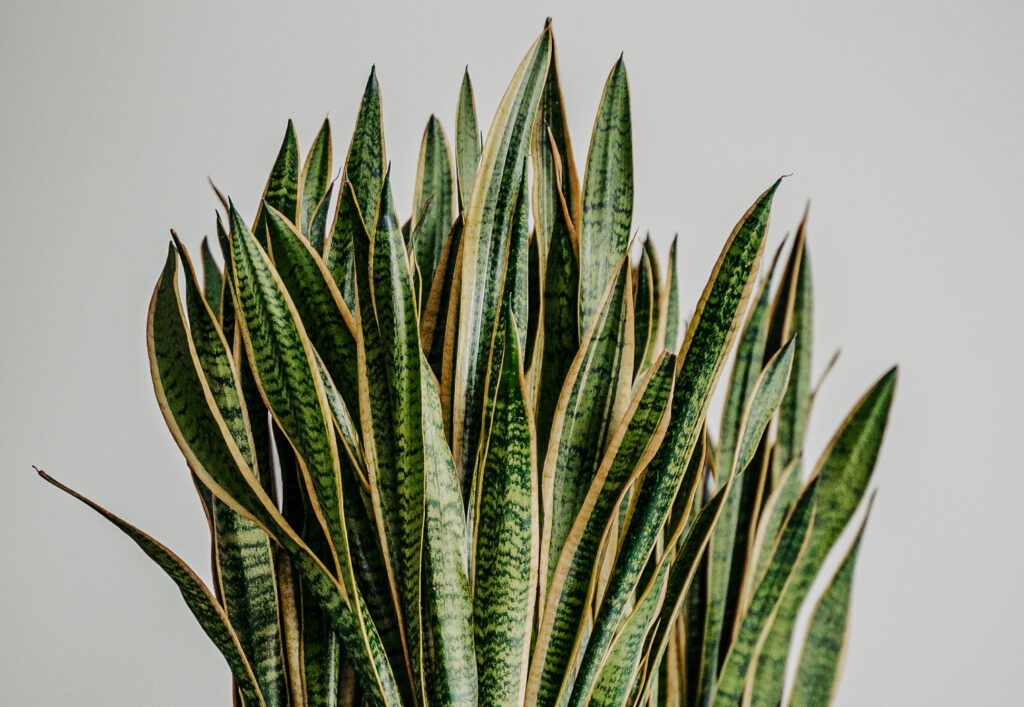
1. Snake Plant (Sansevieria trifasciata) – This plant is renowned for its lengthy, upright leaves that are adorned with stripes of green and yellow. Snake plants are incredibly low-maintenance and can withstand a wide range of light and water conditions.
Agave
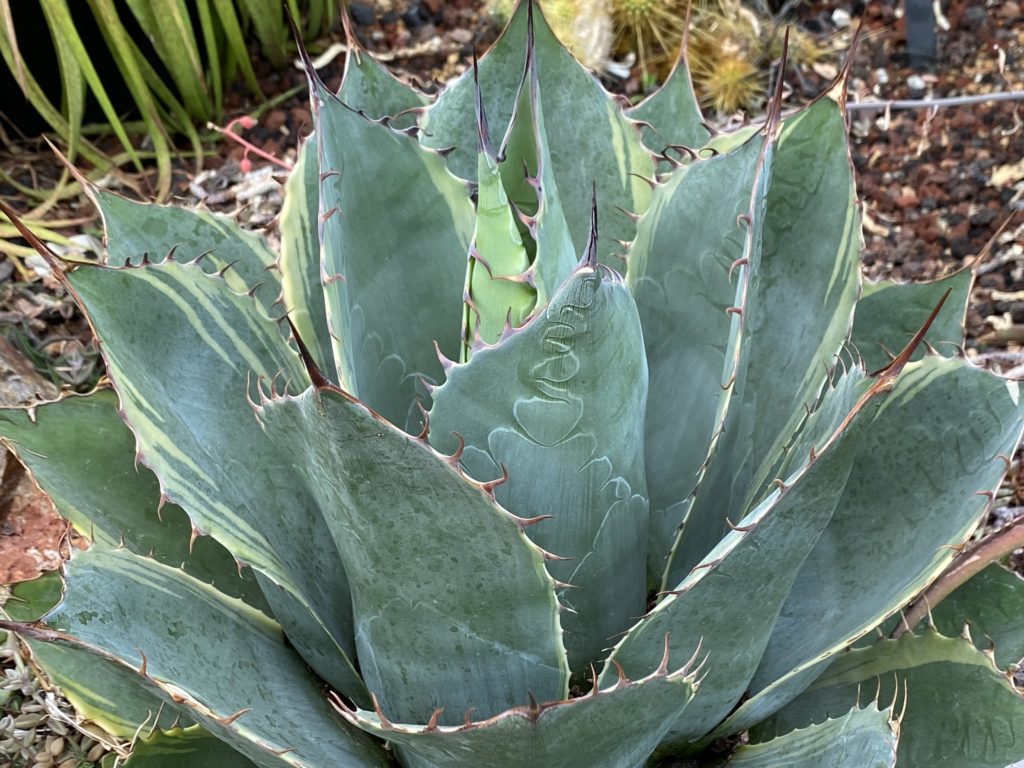
2. Agave (Agave americana) – Agave plants are instantly recognizable for their sharp, pointed leaves that form a rosette shape. They are drought-tolerant and prefer bright, indirect light.
Aloe Vera
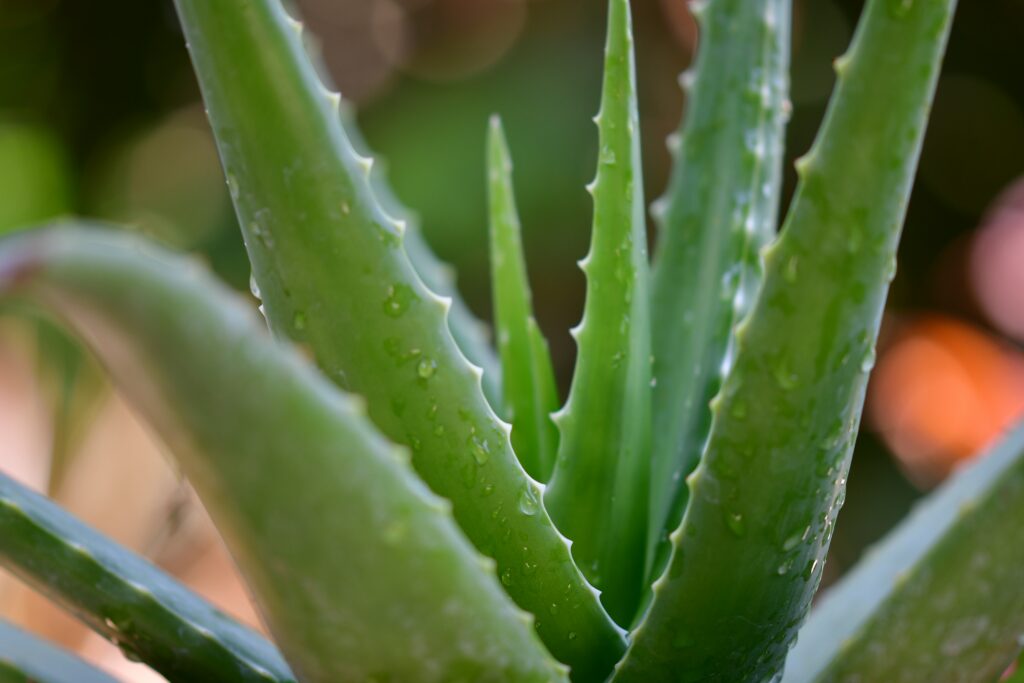
3. Aloe Vera – Aloe vera plants are not only spiky, but also have medicinal properties. They are easy to care for and prefer bright, indirect light. Aloe vera plants also have air-purifying qualities, making them a great addition to any home.
Barrel Cactus
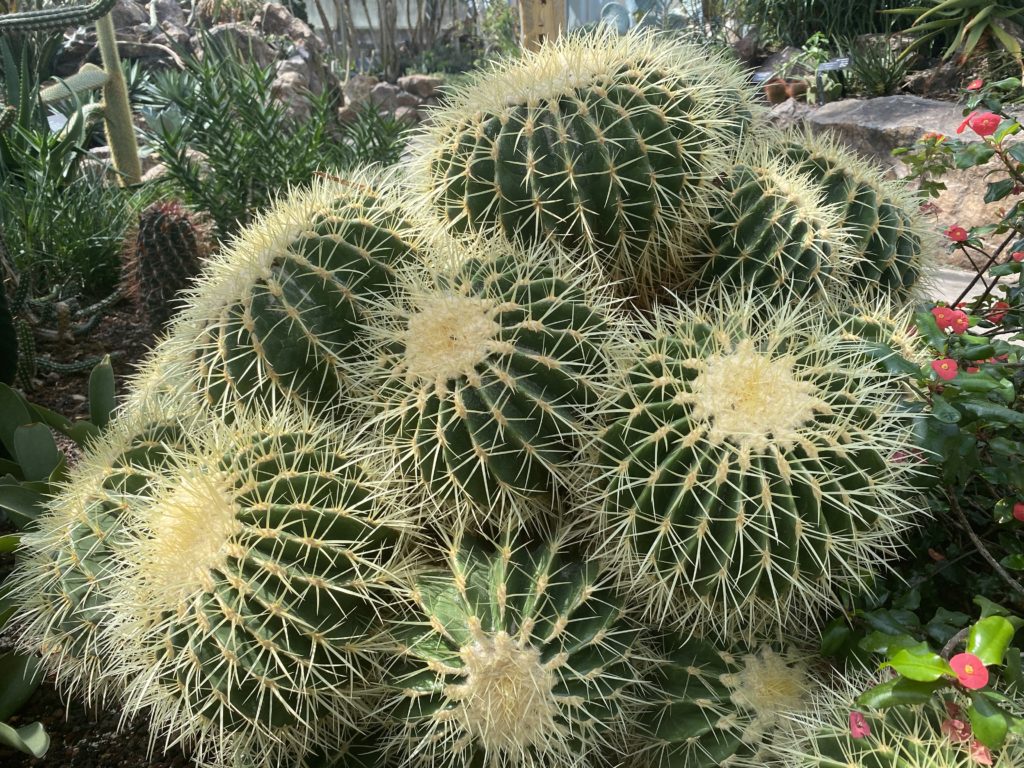
4. Barrel Cactus (Echinocactus grusonii) – This cactus is known for its spherical shape and spiky exterior. It is drought-tolerant and prefers bright, direct light. Barrel cacti are slow-growing, but can live for decades with proper care.
Yucca Plant
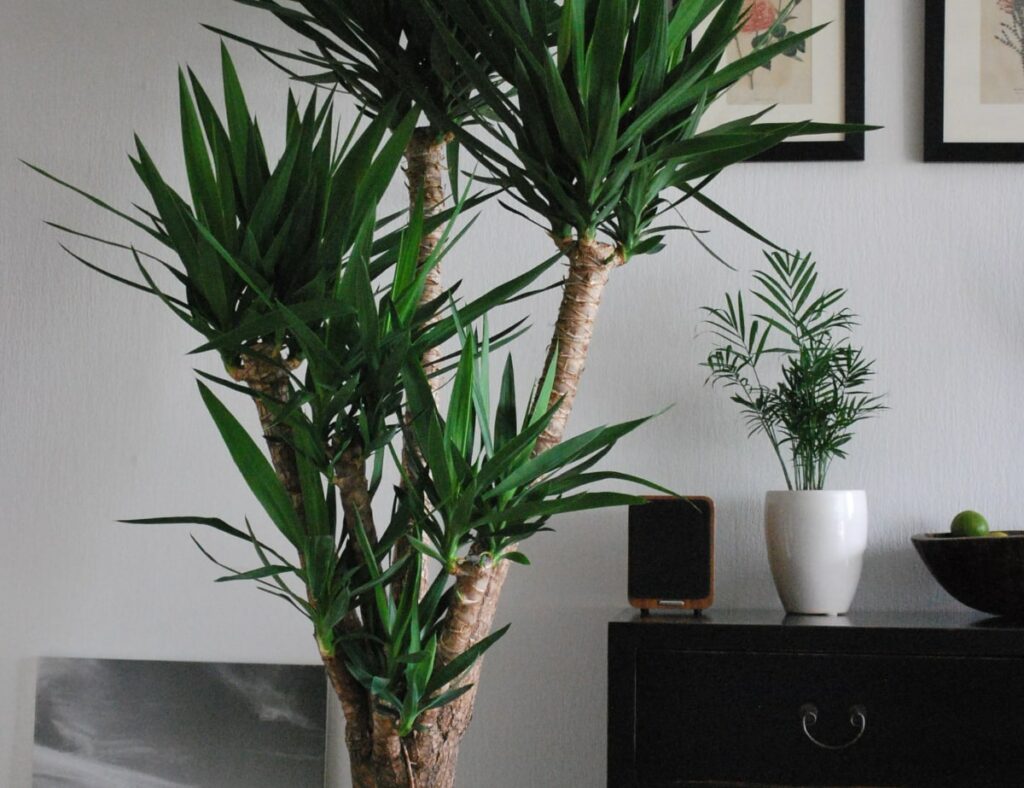
5. Yucca (Yucca filamentosa) – Yucca plants have long, sword-like leaves that are spiky and visually striking. They are drought-tolerant and prefer bright, indirect light. Yucca plants can also produce tall, white flowers in the summer months.
Overall, these spiky plants are fantastic options for beginners who want to add some texture and interest to their indoor or outdoor spaces. With minimal care, they can thrive and add a unique touch to any garden or home.
How to Care for Cacti and Spiky Succulents
Spiky plants are a fantastic addition to any garden or indoor space, providing texture, interest, and a touch of drama to any setting. However, caring for these prickly beauties can be a bit tricky, as they require specific conditions to flourish. Fear not, for we have compiled a list of tips to help you care for your spiky plants with ease.
First, watering is a crucial aspect of spiky plant care. These plants generally prefer well-draining soil, so it’s essential not to overwater them. Allow the soil to dry out slightly between waterings, and make sure the pot has drainage holes to prevent water from sitting in the bottom.
Second, light is another critical factor in spiky plant care. Most spiky plants prefer bright, indirect light, but some species, such as cacti, can tolerate full sun. It’s crucial to research the specific needs of your spiky plant to ensure it gets the right amount of light.
Third, soil is an essential component of spiky plant care. These plants prefer soil that is slightly acidic and well-draining. You can use a cactus or succulent mix, or create your own by mixing sand, perlite, and potting soil.
Fertilizing spiky plants is generally not necessary. However, you can use a balanced fertilizer once a month during the growing season, but be sure to follow the instructions on the package.
Pruning is necessary for some spiky plants, such as agave and yucca, which can grow quite large and may need to be pruned to keep them in check. Use sharp, clean shears to remove any dead or damaged leaves, and cut back any overgrown stems.
Lastly, pests can be a problem for spiky plants, although they are generally resistant. Keep an eye out for any signs of infestation, such as sticky residue or webbing, and treat with an insecticidal soap or neem oil.
By following these tips, you can ensure that your cacti plants thrive and add a unique touch to your home or garden. So go ahead and add some spikes to your collection, and watch them flourish with proper care and attention.
Common Problems and Solutions for Spiky Plants
Spiky succulent and cacti plants are a great way to add a unique and interesting touch to any garden or indoor space. Here are some of the most common issues that spiky plant owners may encounter, along with some solutions to help keep these plants healthy and thriving.
One of the most common problems is overwatering. Many spiky plants, such as cacti and succulents, are adapted to survive in dry conditions and do not require frequent watering. Overwatering can lead to root rot and other issues. To avoid this problem, make sure to only water your spiky plants when the soil is completely dry. You can also use a well-draining soil mix to help prevent water from pooling around the roots. Spiky plants can attract a variety of pests, including mealybugs, spider mites, and scale insects.
These pests can damage the plant and cause it to become weak and unhealthy. To prevent pest infestations, make sure to regularly inspect your plants for signs of pests and remove any affected leaves or branches. You can also use natural pest control methods, such as neem oil or insecticidal soap, to help keep pests at bay. Many spiky plants require bright, direct sunlight to thrive, but too much sun exposure can lead to sunburn and damage to the leaves. To prevent sunburn, make sure to gradually acclimate your plants to direct sunlight and provide them with some shade during the hottest parts of the day. You can also use a sheer curtain or shade cloth to filter the sunlight and protect your plants. Some spiky plants, such as bromeliads and orchids, require a specific soil pH to grow properly. If the soil pH is too high or too low, it can lead to nutrient deficiencies and other issues. To ensure that your spiky plants are getting the right nutrients, test the soil pH regularly and adjust it as needed using a soil pH testing kit or by adding soil amendments.
By being aware of these common problems and taking steps to prevent them, you can help ensure that your spiky plants stay healthy and vibrant for years to come. With a little bit of care and attention, these unique and striking plants can be a beautiful addition to any home or garden.
Creative Ways to Display Spiky Plants in Your Home
Spiky plants are a fantastic addition to any home, as they add texture and interest to your decor. However, the question remains: how can you display them in a creative way? Fear not, for we have compiled a list of ideas that will help you showcase your spiky plants in a unique and visually appealing manner.
First, hanging planters are a great option for spiky plants such as cacti and succulents. You can use macrame hangers or metal chains to suspend them from the ceiling or a wall, creating a stunning display that is sure to catch the eye.
Another option is to create a mini desert landscape in a glass terrarium. Use sand, rocks, and small spiky plants to create a low-maintenance display that is both beautiful and intriguing.
For those who prefer a more traditional approach, mounting spiky plants on a wooden board or canvas can create a living wall art piece that is both colorful and textured. Mix and match different types of plants to create a truly unique display.
If you’re looking to add some greenery to your reading nook, arranging spiky plants on your bookshelf is a great option. Mix and match different types of plants for a varied display that is sure to impress.
For those with limited space, creating a mini garden on your window sill using spiky plants is a great way to add some greenery to your home. This is a fantastic option for those who want to add some personality to their decor.
If you’re looking to create a dramatic display, grouping several spiky plants together on a table or shelf is a great option. Use plants of different heights and textures for added interest.
Finally, using repurposed containers like teapots, mugs, or tin cans to display spiky plants is a great way to add some personality to your decor. This is a fantastic option for those who want to add some personality to their home.
With these creative ideas, you can display your spiky plants in a way that adds interest and texture to your home. So go forth and showcase your green thumb with pride!
Conclusion: Why Spiky Plants are a Great Addition to Your Plant Collection
The addition of spiky cacti and succulents to your plant collection is a decision that can bring a plethora of benefits. First, their unique texture and visual interest can create a striking contrast to other plants with softer foliage, making them stand out in any setting. Their spiky leaves or stems can add a touch of edginess to your indoor or outdoor space, making it more visually appealing.
Second, these plants are often low-maintenance and easy to care for, making them ideal for busy plant owners or those with less experience in gardening. Many varieties are drought-tolerant and can thrive in a range of conditions, making them a practical choice for those who want to simplify their gardening routine.
Finally, succulents and cacti can also have practical benefits that go beyond their aesthetic appeal. Some varieties, such as aloe vera, have medicinal properties and can be used to treat minor burns and cuts. Others, like cacti, can help purify the air in your home by removing toxins and pollutants, making them a valuable addition to any household.
Overall, the versatility and value of these plants make them a must-have for any plant collection. Whether you’re looking to add some visual interest to your space, simplify your gardening routine, or enjoy the practical benefits they offer, there’s a spiky plant out there for everyone.
Frequently Asked Questions
What are spiky plants?
Spiky plants are plants that have sharp, pointed leaves or stems. They are often used in landscaping to add texture and interest to a garden or outdoor space.
What are some popular spiky plants?
Some popular spiky plants include agave, yucca, cactus, and succulents. These plants are known for their unique shapes and textures, and are often used in desert or Mediterranean-style gardens.
Are spiky plants difficult to care for?
Not necessarily. While some plants, like cactus, require very little water and can thrive in hot, dry conditions, others, like agave, prefer more moderate temperatures and regular watering. It’s important to research the specific needs of each plant before adding it to your garden.
Can spiky plants be harmful to pets or children?
Yes, some cacti plants can be harmful if ingested or touched. It’s important to research the toxicity of each plant before adding it to your garden, and to keep pets and children away from any plants that could be harmful.
Can spiky plants be used indoors?
Yes, many cacti and succulents can be used indoors as well as outdoors. Some popular indoor spiky plants include snake plant, spider plant, and aloe vera. These plants can add texture and interest to any room, and are often low-maintenance and easy to care for.

